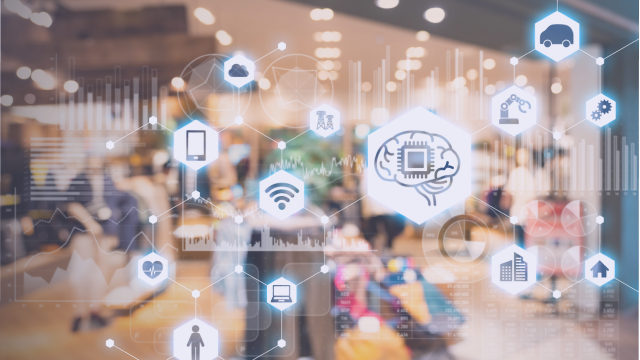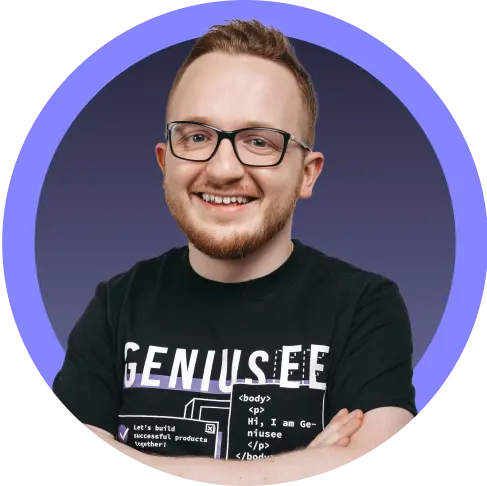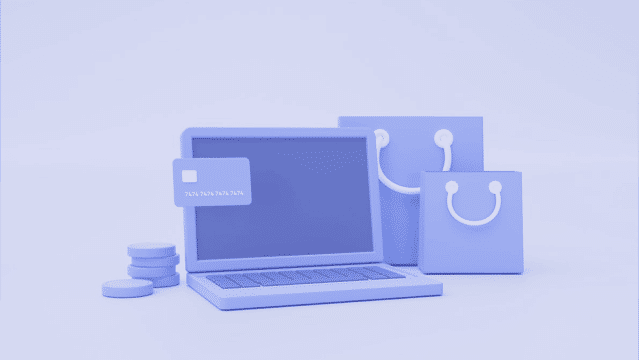The COVID-19 pandemic accelerated the need for digital transformation. As customer demands for shopping experiences change and become more sophisticated, retailers chase advanced technologies for higher customer satisfaction and loyalty. Many are now actively experimenting with cutting-edge technologies, such as computer vision, deep learning, artificial intelligence (AI), machine learning (ML), and other retail technology trends.
However, many retailers still have difficulty integrating these technologies, with high upfront costs and a lack of technical expertise still being their key problems.
According to a report by McKinsey, the right investments in technology can accelerate the time to market for digital offerings by 3 times and optimize run costs by up to 20%, which can be reinvested in digital innovation projects. There is no better time to start investing in new technology in retail than now.
If you’re unsure where to begin, this article will dive deep into the future of retail technology and how it will benefit your business and help you get a competitive edge.
Best retail industry technology trends
Future retail technology trends are about understanding customer needs and improving your business processes to service them. For example, some customers prefer to minimize interaction with staff, so contactless store experiences come in handy.
Availing goods and services in virtual reality (VR), like Meta's Metaverse, tracking customer behavior patterns through security cameras, collecting retail analytics, predicting customer demand for specific services and goods, and other trends will lead 2025 to a powerful digital transformation.
Now, let’s dive into discussing some significant retail store technology trends.
#1. Contactless stores for shopping and autonomous delivery
Minimizing friction and human interaction in shopping is creating popularity among no-contact stores. These technologies allow cashless, contactless, and autonomous shopping, resulting in faster and more convenient shopping. While the COVID-19 pandemic helped push this trend, many people also find comfort in less human contact out of their anxiety.

This trend became especially valuable when the COVID-19 pandemic restrictions were introduced. However, the need isn’t new, as many people prefer to minimize human interaction due to high levels of anxiety.
The key features of such stores include:
- Ability to buy online and pick up in-store (BOPIS)
- Self-service checkout kiosks
- NFC-based payment cards and/or mobile wallets as a payment method.
Stores can use neurolinguistic programming to absorb human language and transform the customer experience. Just as an example is Amazon Go, which makes use of Just Walk Out technology for the cashier-less shopping experience. The combination of AI, computer vision, RFID, infrared sensors, and mobile apps allows customers to pick the items they want and pay contactless when they exit.
#2. VR shopping experiences in Metaverse
The Metaverse is a virtual world where people can 'socialize,' play, work, and shop, all using digital avatars. Already led by retailers such as Amazon, Nike, Louis Vuitton, and Coca-Cola, leading retailers have embraced the Metaverse to create unique consumer experiences.
For example, Louis Vuitton launched the mobile game they named “Louis the Game,” which offers exclusive NFTs tied in the game along with challenges to travel the game world, where the players collect candles to celebrate the brand’s anniversary. This unique, gamified, one-to-one retail personalization can be accessed via mobile devices, VR headsets & smart glasses in the Metaverse.
Virtual shopping with these interactions was exciting and unforgettable. The global Metaverse market is reportedly expected to reach $679 billion by 2030, so it’s safe to say that this whole digital shopping thing is growing.
However, Metaverse allows access to luxury brands that are usually unavailable in any physical store through its decentralized nature. To get into the Metaverse, retailers need partners with IT skills in 3D software, gesture recognition, spatial mapping, machine learning, and cloud computing.

By the way...
FacePay, IoT, VR, and More: Technologies That Change Retail
Technological solutions open up new opportunities for retailers. Implement them first with Geniusee.
Let's see#3. AI-enabled security cameras
Computer vision (CV) shapes the new retail technology. Video security cameras with built-in CV technologies, 5G, and AI in retail can be programmed to detect the presence or removal of certain types of objects in stores or trace the activity of a shopper in them, like movement patterns.
With the help of computer vision and image recognition, IP cameras with AI capabilities can make retailers’ lives much more manageable. Here are a few use cases where they may help:
Crime prevention. AI-powered cameras can prevent crimes by recognizing shoplifters based on license plates, QR codes, and facial recognition.
Detecting similar items in stock. Cameras track low or damaged inventory and provide product photos for websites.
Monitoring in-store shelves. AI cameras can monitor store shelves in real time and send alerts about missing items.
- Track customer behavior. With marketing insights from customer behavior analysis, AI cameras can also tell retailers whether they are selling the products people want.
Recently, the largest grocery chain in the US, Kroger Co., started introducing AI-enabled security cameras to optimize self-checkouts and contactless payments. It was slow and error-prone since customers weren't as fast at scanning product labels as cashiers. Scanned products were identified by AI-powered object detection cameras, verifying that billing was correct and alerting staff if they were needed to assist customers.


Thank you for Subscription!
#4. Interactive experiences with virtual and augmented reality
Virtual reality (VR) and Augmented reality (AR) are becoming essential tools in the retail industry by creating an interactive way to shop. They help customers make better decisions and have more engaging shopping sessions. QR codes are one of the simplest ways to insert VR and AR into the retail sector. This allows the customer to scan them and get access to more product info or even try virtual experiences.
Virtual fitting rooms allow customers to try on clothing or accessories or even see what furniture and beauty products look worn or placed in their own photo or home space. This can personalize an immersive shopping experience without physical interaction.
A good example is IKEA’s Place app, which allows customers to virtually "place" IKEA products in their space.
The trend is booming, and the global virtual fitting room market is predicted to grow from $4.03 billion in 2022 to $14.87 billion by 2029.
#5. Retail video analytics
Before, brick-and-mortar retailers couldn’t gain as many insights about their shoppers' behaviors as owners of online e-commerce sites without the help of modern data analytics technologies. Now it is possible!
Retail video analytics — similar to AI-enabled security cams, will capture real-time footage of the store to analyze customer behavior and improve their business processes, generally increasing foot traffic.
Here are a few examples:
Analyzing foot traffic. Video analytics allows retailers to monitor their customers' flow into a store and learn what drives them to choose a specific store.
Tracing customer movement in-store. Is it convenient for buyers to move from one shelf to the next? Is the store layout convenient? Are all items visible to customers? How easily can all customers reach the top and bottom shelves? Retail video analytics can answer these and many other questions about in-store experience.
Determining the impact of online promotions on foot traffic. Retail video analytics helps measure store cleanliness, customer service, and product display and links online promotions to changes in foot traffic.
Computer vision and generative AI are key technologies that power this retail trend. If you struggle to drive insights from the data you capture with your in-store cameras, leverage video analytics for profitability. In addition, you can use machine learning operations (MLOps) since a benefit of MLOps is creating reproducible models of behavior to help you shape the customer experience.
Quick health check
Is your business analysis good enough? Are you sure? Check out how your company is doing
#6. Retail demand planning
A new retail technology trend is using technology to plan potential demand for certain products and services. The main goal of demand planning is to utilize a variety of data insights for better forecasting accuracy. Another vital area is satisfying customers' demands with an optimal inventory.
With the help of AI and ML technologies and advanced analytics, sellers can accurately forecast the demand for products across their retail stores and other sales channels. Several factors help them plan for the demand:
Internal – customer data, historical demand patterns, order management, and confident decisions.
External – competitor offers and global buying patterns on the retail market.
Demand planning technological solutions enhance forecasting accuracy, are better at handling unanticipated events such as pandemics or wars, and are more efficient. Some key drivers are in-memory, hybrid data processing, and cloud computing.
These technologies enable retailers to take advantage of replenishment and optimize workforce planning, product promotions, discounts, assortment planning, and resolve budgeting, cash flow, and inventory management problems.

Why is technology in retail so important?
Naturally, in 2023, innovative technology was the key for retailers, allowing them to integrate into the trends and reduce costs. It’s also a great source of information about customer experiences, brand loyalty, and closeness with buyers. This enabled any retailer to improve its custom experiences and keep up with the competition in a quickly changing market.
If you are still wondering how emerging technologies fit your business model, consider consulting an experienced tech vendor. Companies that offer retail software development services will help you choose and implement the right technological solution to keep up with technology trends in retail.
One such company is Geniusee, where software developers decide on an individual approach for custom retail solutions. This helps ensure that our custom-made solutions keep up with the retail tech trends of 2025 and increase your customer satisfaction rate.
Geniusee’s experience
With vast experience in retail software development, Geniusee engineers consult clients on what technologies can positively impact their business decisions. The most wanted technologies include e-commerce platforms and POS systems, diverse omnichannel solutions for the retail industry, predictive analytics platforms, innovative data processing with artificial intelligence, and online ordering systems, to name just a few.
Here are a few retail technology cases we developed:
- Swyft – a grocery delivery app. Here, we created a mobile app for Android and iOS that allows users to order groceries and have them delivered within 15 minutes. The key challenge was to help the app become the fastest delivery service in Poland.
- Crave Retail – a set of virtual fitting rooms for mobile, which we helped improve and made available for Android phone and tablet users.
- Swoon – a furniture brand for which we conducted business analysis, helped improve their website, and integrated a payment system.
- Validify – a retail technology discovery platform that we helped create. We built the platform, its infrastructure, features for adding vendor profiles, and other functionality that helps the company curate a database and offer users complete information about the featured technologies.

Just a sec!
Internet of Behavior in Retail: full guide
Check it out - we've prepared a great hub for you with everything our experts gathered on how to properly use internet of behavior in retail.
I'm on itConclusion
For retail technology trends in 2025 and onwards, the companies that implement them first and offer new shopping experiences to their consumers earn a competitive advantage and higher ROI.
Most retailers are still hesitant about whether technology is a good area for investment. However, if nothing else, the COVID-19 pandemic showed us that early adopters are already enjoying higher customer loyalty and revenue increases after offering novel, technology-driven experiences through their marketing channels. If you want to be among these retailers, don’t stall!
It is still too early to rest on your laurels once you nail the basics of implementing new technologies for your retail store with a reliable software vendor. Keep experimenting with new technology trends in retail — from inventory management, automation delivery model, and supply chain to no-contact stores and retail demand planning.
A professional software development partner like Geniusee will help you implement the most trending technologies for your e-commerce or brick-and-mortar store. If you want to improve customer satisfaction while driving revenue growth, we’ve got what you need. Contact our retail tech experts now, and take your platform to the next level.





















